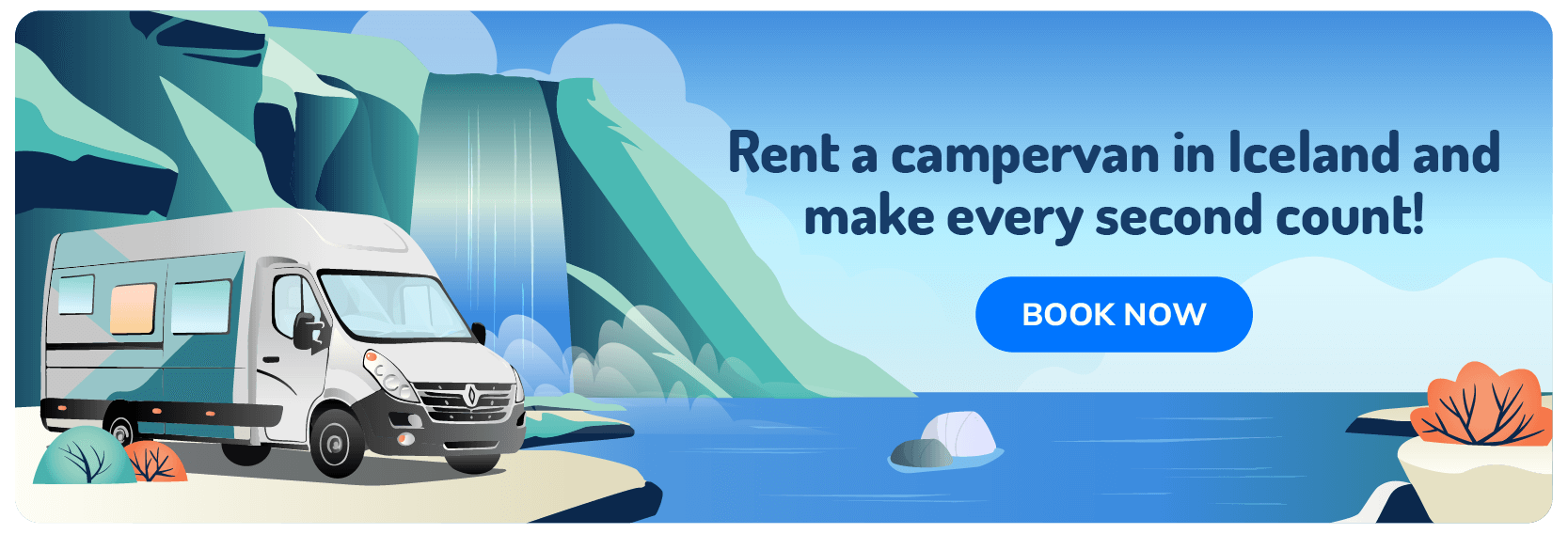The arrival of spring in Iceland signals a time when the island seems to awaken from its icy slumber and truly comes alive, from temperatures rising and daylight hours increasing to all sorts of migratory wildlife coming to make the island their short-term home.
Needless to say, spring has become a favorite time for travelers to visit the island. This guide will tell you everything about the season and provide all the important information to help you prep for your Iceland adventure.
When is Spring in Iceland?
Spring is from March to May on the island. Here’s a quick overview of what you can expect from Iceland’s weather in spring (outlining each month):
|
March |
April |
May |
|
|
Temperature |
Ranges from as low as -2.6°C (27.3°F), as high as 3.5°C (38.3°F), and with an average of 0°C (32°F) |
Ranges from as low as -0.3°C (31.5°F), as high as 6.6°C (43.9°F), and with an average of 2.6°C (36.7°F) |
Ranges from as low as 4°C (39°F), as high as 10°C (50°F), and with an average of 7°C (44.6°F) |
|
Rainfall |
+/- 82mm (3.2 inches) |
+/- 60mm (2.4 inches) |
+/- 44mm (1.7 inches) |
|
Windspeed |
+/- 22.6km/h (14mph) |
+/- 20km/h (12.4mph) |
+/- 13.6km/h (8.4 mph) |
|
Daylight Hours |
10-13 (increasing throughout) |
13-16 (increasing throughout) |
16-20 (increasing throughout) |
|
Additional Things to Note |
You’ll still find plenty of remnants of the winter in March, especially early March, with patches of snow and ice still melting. This is also why you’ll still be able to explore the ice caves (usually closed during the warmer months). |
April will be the month to go if you’d like to go whale watching. While you’ll always find whales along the Icelandic coast, April to September marks our official whale season, with many migratory whales also calling the island home. |
May will be the month to go if you’d like to spot our legendary Puffins. They will make Iceland their home till around August. |
Pros and Cons of Visiting Iceland in the Spring
Visiting Iceland in spring has its pros and cons, like any other season, and it will be up to you to decide whether spring will suit your preferences, needs, and budget. These are some of the most important pros and cons to consider:
Pros
- Spring falls smack bang between some of our busiest times here on the island – the festive season and New Year, as well as our peak summer season. These “down” season months of spring bring many perks, such as not having to deal with peak season crowds and not having to splurge out extra due to peak season pricing.
- The weather increasingly improves all throughout spring, with weather conditions becoming milder and temperatures becoming hotter.
- Daylight hours are also constantly increasing, making it the perfect time to visit Iceland if you have a jam-packed itinerary planned, especially if you’re eyeing having some outdoor adventures.
- Certain springtime shoulder months can actually give you the best of both worlds. For example, in March, the weather and daylight hours are slowly moving towards summer vibes, but it still has enough cold and darkness to see the Northern Lights, and you’ll still find the ice caves open. May in Iceland will give you many of the peak summer season perks, such as amazing weather and an abundance of daylight hours, but without having to pay the exorbitant peak season prices.
- If you’re a nature lover, spring is the ideal time to visit Iceland. From birds to animals – the island becomes an absolute haven for wildlife. There are migrating birds arriving, the Puffins are returning from the sea, migrating whales are making their way to our coastline, and babies are in abundance (reindeer, horses, sheep, you name it!).+
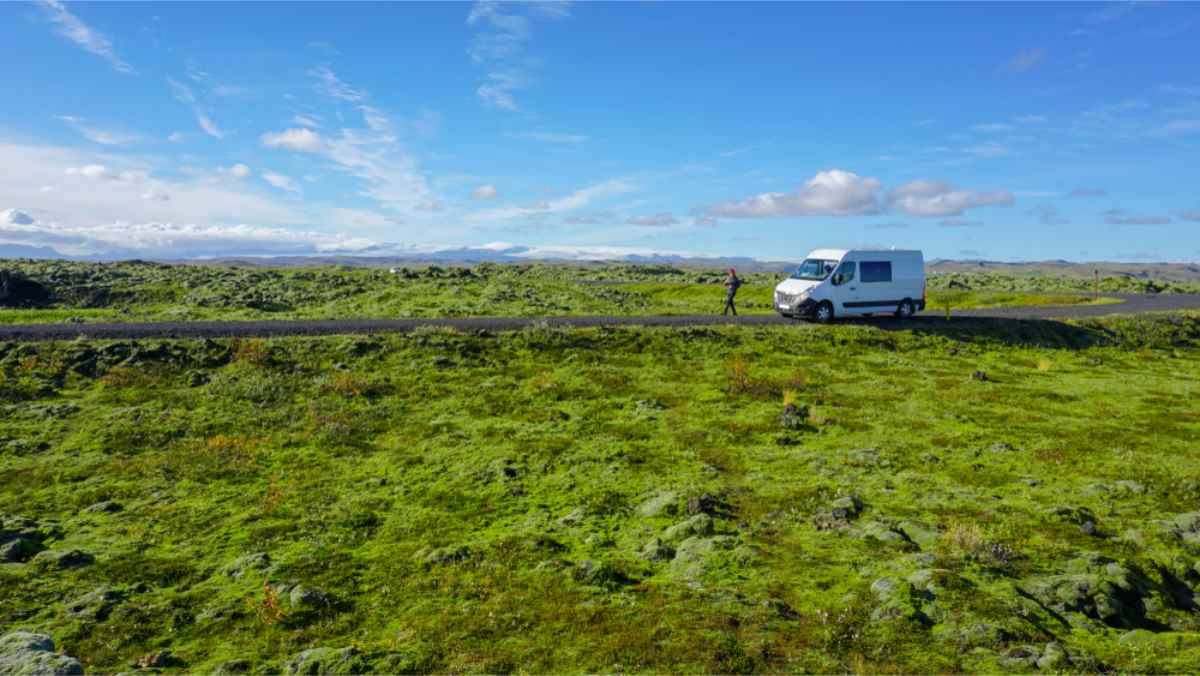
Cons
- Because spring in Iceland falls in the “down” season, you may find that attractions, activities, and transport may still be operating “down” season times. This may mean only being open on certain days or at specific times, and transport, such as ferries, buses, etc., may make fewer daily trips. You must double-check this before your trip since it will inevitably impact your itinerary.
- If you have the Midnight Sun on your Iceland bucket list, spring won’t be the season for you. The Midnight Sun is a phenomenon that only occurs at the height of summer when daylight hours are so many that you essentially end up with 24-hour days.
- While March brings plenty of “both world” perks, its winter side has a drawback; it can make road conditions challenging. If you’re someone coming from a country where you don’t need to deal with ice and snow on the roads, or you consider yourself a bit of a nervous driver, driving in certain areas (especially the north!) will be a challenge.
The Best Places to Visit in Iceland in Spring
If you’re planning on visiting Iceland in spring, you can consider adding the following places to your trip itinerary:
Iceland’s Spectacular Waterfalls
You will find more than 10,000 waterfalls here in Iceland, but there are a few must-visit waterfalls that are simply too spectacular and unique to miss. These include:
- Svartifoss Waterfall – The waterfall with such a dramatic basalt backdrop that it inspired an architect to create one of Iceland’s most famous landmarks: Hallgrimskirkja.
- Seljalandsfoss Waterfall – Known as the waterfall where you can walk behind its veil of water and look out over the Icelandic landscape.
- Dynjandi Waterfall – A waterfall that’s been part of a nationwide debate for decades: does it resemble a bridal veil or a wedding cake?
- Godafoss Waterfall – Translating into the “waterfall of the gods,” it is believed that this waterfall was the place of a symbolic religious gesture. Legend has it that upon the island’s conversion to Christianity, a chieftain threw all his pagan idols into the waterfall.
- Dettifoss Waterfall – The second most powerful waterfall in all of Europe. It makes for a jaw-dropping display and has an incredible roar.
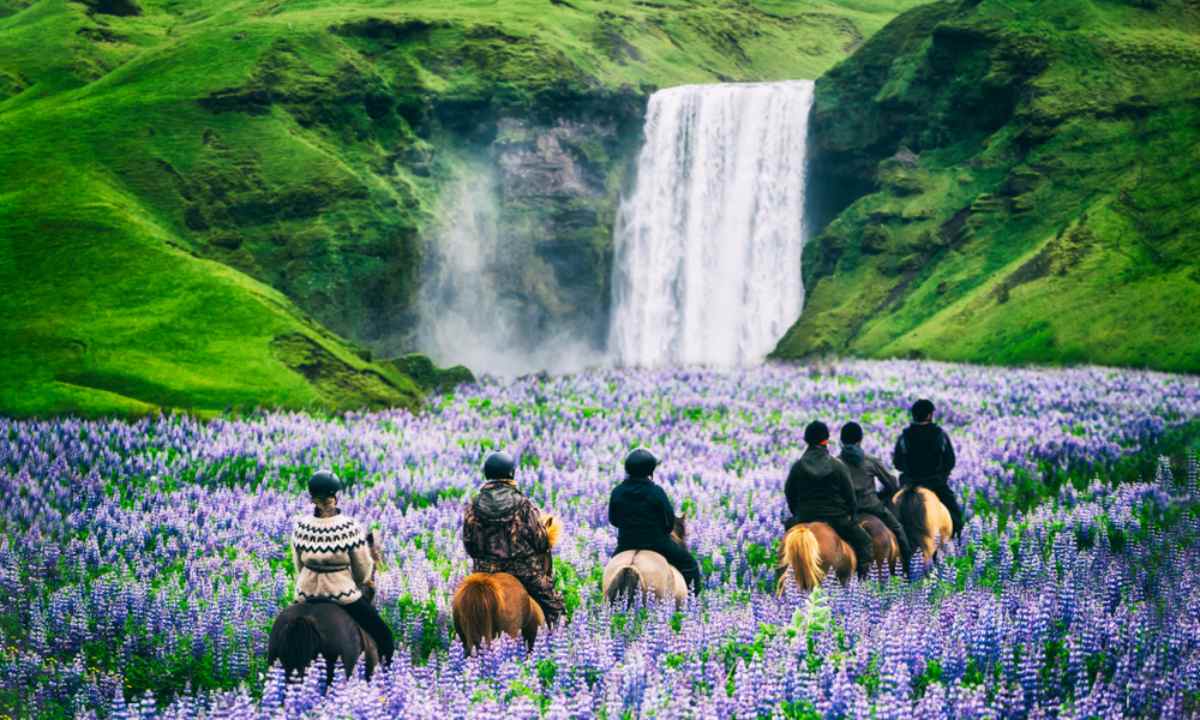
The Ice Caves (Only Available During March)
You will find various ice caves scattered all across the island. These icy caverns are an other-worldly experience. The bright blue yet somehow translucent walls, often with black streaks of ash (remnants of past volcanic eruptions) frozen in time. Then there are all the interesting ice formations.
The weirdest and most wonderful part of visiting Iceland’s ice caves is that they are ever-changing. Each summer, their interiors and formations melt, change, and then “refreeze” in winter. This makes it possible to visit the same ice cave each year and have a completely different experience each time! Some ice caves you can visit include Katla Ice Cave, Crystal Ice Cave, and the Skaftafell Ice Caves.
Our Legendary Festivals and Events
Icelanders don’t need an excuse to party, and as the island comes back to life and spirits rise along with the temperatures, you’ll start seeing more and more festivities. Some celebrations you can look forward to when visiting Iceland in spring are the Design March and the Reykjavik Food and Fun Festival.
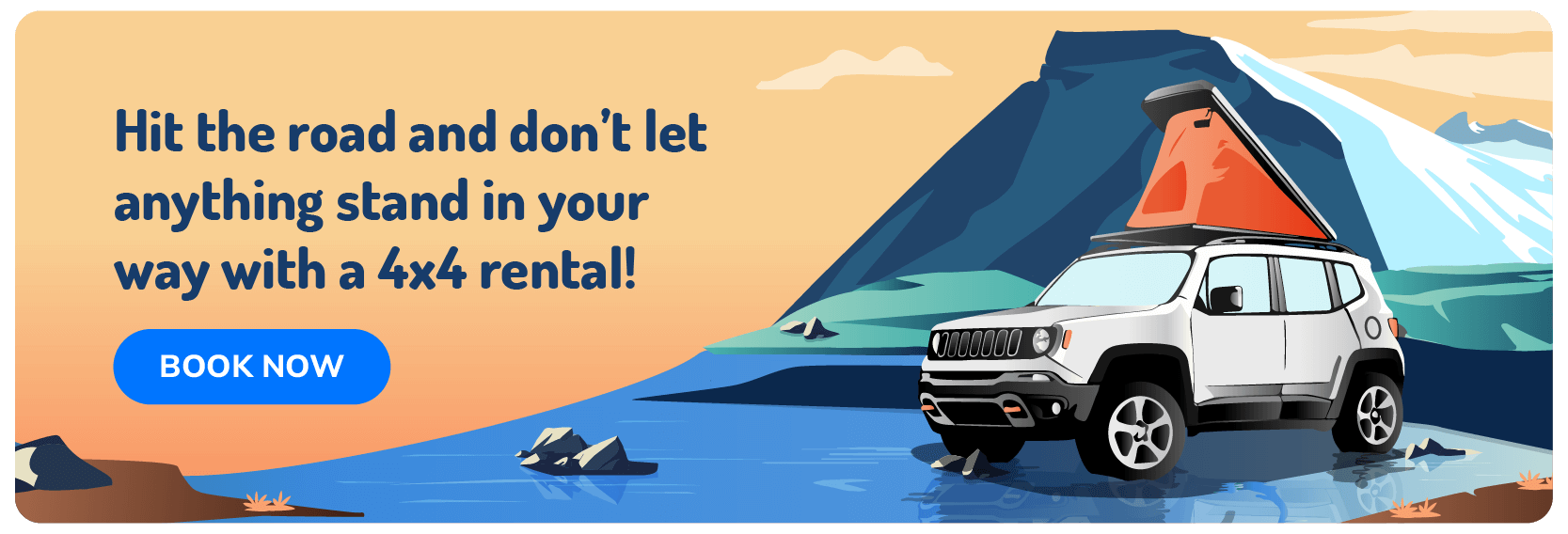
The Best Things to Do in Iceland in Spring
The following are some of the best things to do in Iceland in spring:
Go on a Puffin or Whale Watching Boat Tour
As the migratory whales come to join our local whales along our coastline and the Puffins return for their breeding season, you will find many boat tours giving you a chance to get up close to these gentle giants and the “clowns of the ocean” as the Puffins with their brightly colored beaks are often referred to.
From species like Minke Whales and Orcas to the real giants like Sperm Whales and Blue Whales (the latter being the largest of the whale species) – you’ll stand a chance of getting a glimpse of them all! The Puffins also make for interesting sightings, whether floating on the water or lining the cliffs of the coasts where they’re nesting. Boat tours allow you to see them from angles that are simply not possible on foot (well, not unless you’re a master swimmer or mountain climber).
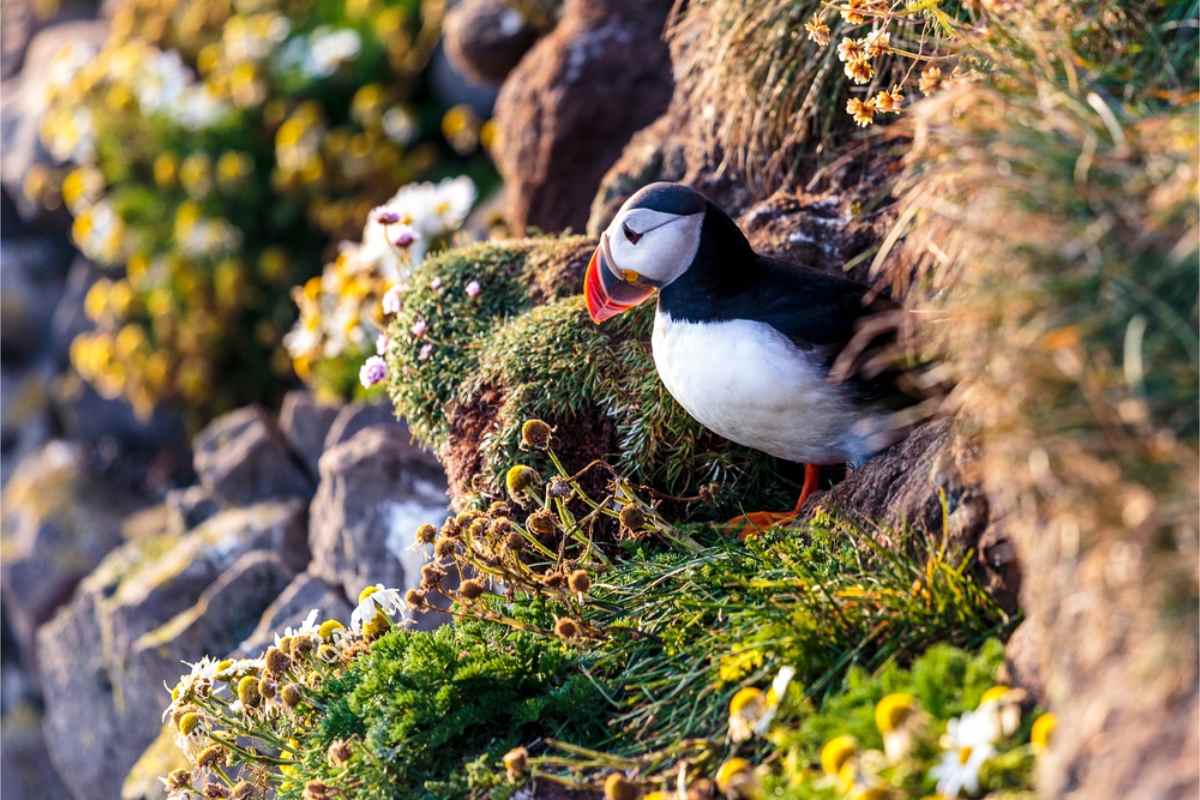
Dive or Snorkel the Silfra Fissure
Fissure is just a fancy word for a tear, and that is exactly what Silfra is. But it is a pretty impressive tear, to say the least. This tear in the earth’s surface is where two tectonic plates from two different continents, North America and Eurasia, are slowly moving further and further apart.
Although this phenomenon is visible on other parts of the island as well, the Silfa is unique in that the tear is filled with the clearest of glacial water, making it possible to go diving or snorkeling and, essentially, lying suspended between two continents. Just remember that snorkeling is available to anyone, but diving requires a valid diving license and sufficient diving experience.
Go Hiking
As you can imagine, spring officially kicks off our hiking season, and with such breathtaking landscapes and incredible natural wonders, you’re in for a real treat when hiking in Iceland. We have various hiking trails all across the island, all ranging in length and difficulty level. You can also pick between day hikes and multi-day treks. Some of our most beloved trails are Glymur Waterfall, Reykjadalur Valley, Mount Esja, and Thakgil.
Have a Soak in a Hot Spring
The island is full of natural hot springs due to volcanic activity heating up our underground water supply. Some of these hot springs can still be enjoyed in the aux naturale forms in the most remote and tranquil of settings, while others now form part of our geothermal pools.
Our geothermal pool venues often resemble what you’d consider a resort with other facilities and amenities, such as spas and restaurants on site. If you’d like to visit one of our natural hot springs in its original form, consider Hrunalaug and Reykjadalur (a natural hot spring RIVER!). And if you’d like to visit one of our geothermal “resorts,” the Blue Lagoon and the Myvatn Nature Baths come highly recommended.
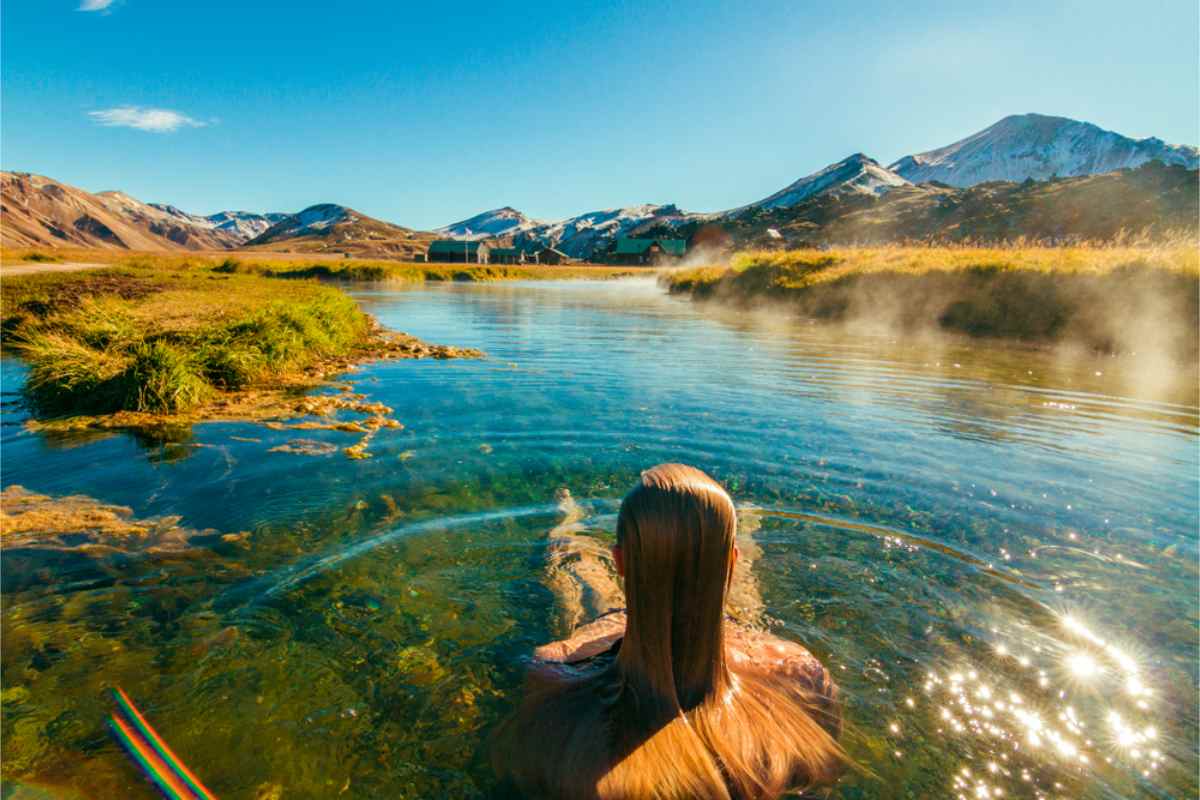
Explore the Island on Horseback
Riding across the spectacular Iceland landscape and taking in the magnificent views is one thing, but what makes exploring the island via horseback extra special is that you’ll be doing it on our very own horse breed: the Icelandic Horse.
These horses are incredibly unique. They look more like ponies than full-grown horses and are very friendly. They are also famous for being able to perform a fifth gait. If you visit Iceland in March, you’ll still find them in their thick, fluffy winter coats. These horseback riding tour companies are found on the outskirts of many of our cities and towns.
The Best (and Most Affordable!) Way of Exploring Iceland in Spring
One of the best ways to explore Iceland in spring is by road-tripping your way across the island in a motorhome. Here’s why:
- A Motorhome is the most budget-friendly option for various reasons. For instance, you’d have both your transport and your accommodation sorted, saving you a ton on accommodation (usually your biggest expense on a holiday). A motorhome will also allow you to book a spot at our super-affordable campsites.
- Speaking of campsites, by using a motorhome, you no longer need to be outdoorsy to enjoy camping since you can now take the “indoors” and all your creature comforts along with you. The fact that your “shelter” is way more insulated and equipped than a traditional tent also makes it possible to go camping earlier and longer during the winter shoulder months when the seasons (and the weather) start changing.
- It offers the ultimate freedom and flexibility. Not only does it allow you to drive and stop when and wherever you want to without any check-in times chasing you, but you don’t even have to consider “setting up camp” (which is an issue when it comes to the other flexible solution of camping).
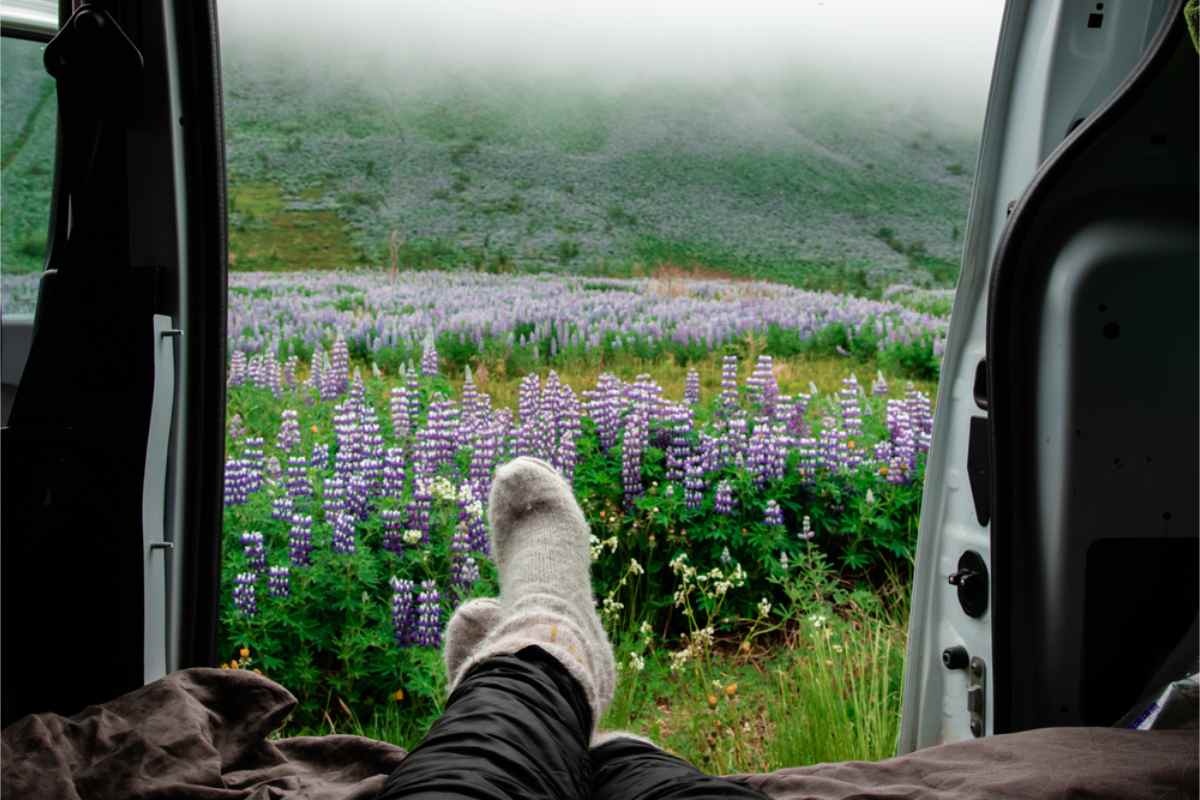
How to Choose the Perfect Motorhome
While missioning around in a motorhome during spring in Iceland has many perks, you’ll need to ensure you get the right motorhome for your specific needs and road trip route. Firstly, you’ll need a motorhome that fits the size of your party.
Trying to cram a family of four in a compact motorhome will be a nightmare, irrespective of how economical it may seem. At the same time, an older couple also doesn’t want to maneuver a motorhome the size of a rock star’s tour bus. Secondly, you will need a motorhome that can take on your planned road trip route.
A 2-wheel drive will do fine on those paved main roads, but once you hit gravel, you want a 4x4 to guide you through. Also, keep in mind that the F-roads will legally require a 4x4 vehicle, but here, there is a thin line to walk sizewise. Even though you will need a sturdy 4x4 for our F-roads, many of these mountain roads can be fairly narrow, so driving an absolute beast of a motorhome will come with its own share of problems.
A Few Packing Essentials for Your Motorhome Adventure in Spring
While your rental agent will take care of most essential items for your spring road trip in Iceland, there are a few things that will make your life a lot easier and remain your responsibility:
- The first item on our list is not so much what should be packed but rather what shouldn't. You must remember that you'll be driving and living in your motorhome, where you've got limited space to work with, so you can't pack your entire wardrobe and bring everything and the kitchen sink from back home.
- Whatever clothes you pack, ensure you can layer them. So, t-shirts, long sleeves, sweaters, jackets, and coats (and don't forget a raincoat) will ensure you're prepared for anything and can take something off and put something on when the situation calls for it.
- Bring swimwear, even if you think you won't be swimming. Our hot springs will definitely entice you.
- We also recommend bringing a quick-drying towel instead of a standard towel since you don't want to be lugging around wet stuff on your road trip.
- Bring a backpack for those day trips/outings.
- Bring refillable water bottles for everyone (or buy them as souvenirs here in Iceland). Between the motorhome and taps all across the country offering the purest water, it's a pretty dumb economic move to buy water.
- Bring a first-aid kit. This is something few think about (or want to think about on their getaway), and it can really make a big difference, especially when traveling our more remote areas.
- Pack enough "backup" for your electronic appliances. Whether chargers, powerbanks, etc., you're gonna need them. Many don't know that the cold here in Iceland actually causes batteries to run flat quicker.
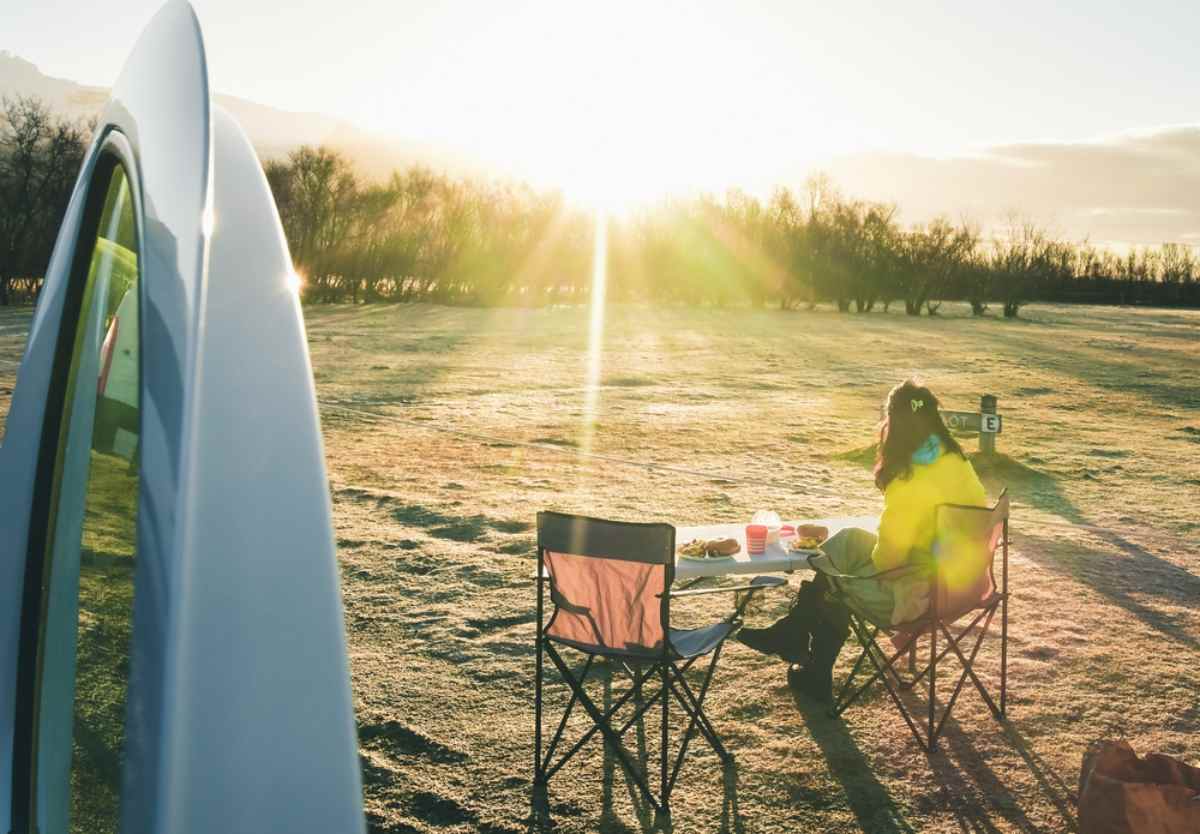
A Few Helpful Tips for Visiting Iceland in Spring & Traveling in a Motorhome
If this is going to be your first time visiting the island or the first time you’ll be visiting in springtime, the following tips and advice will be very useful:
- Always keep a close eye on the Icelandic weather forecast and the Iceland road conditions. This way, you’ll always be one step ahead of anything that might derail your outing or your road trip.
- Always have waterproof clothes and gear nearby (including a raincoat!) Many think this is just to counter the unpredictable weather. But these also come in handy when visiting our waterfalls or going hiking, where you often encounter water.
- A tip to make your trip more convenient and cost-effective is to rent a motorhome in Iceland. This way you’ll have both your accommodation and transport sorted and you’ll be able to book spots at our campgrounds. Our campsites are very affordable (especially if you have a Camping Card) and are often prime locations when it comes to having popular activities and famous natural wonders on your doorstep.
Time to Hit the Road and Experience the Magic of Spring in Iceland!
When you visit Iceland in spring, you will be met with breathtaking natural beauty, an abundance of wildlife, and all sorts of unique cultural experiences as the island (literally) defrosts from its icy winter slumber. So, use this article as your guide and come and experience the magic of spring in Iceland for yourself - you’re guaranteed to be in for the adventure of a lifetime!

